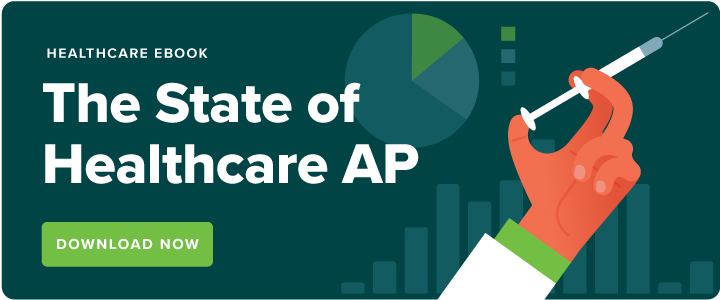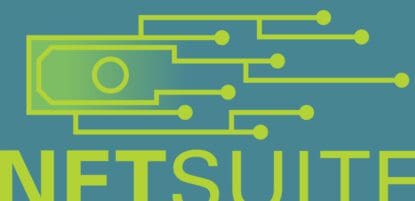Since last year, work-from-home mandates have upended business-as-usual and healthcare organizations have had to create workarounds to get tasks done. On the patient care side, providers are increasingly relying on video telehealth visits to provide essential services, but to keep their processes running and organizations solvent, they also need to take a good, hard look at their financial operations. Forward-thinking healthcare organizations are doing just that, and it has led many to focus on AP workflow automation.
It’s not a moment too soon. In the best of times, many healthcare organizations have been surviving on tight margins and the pandemic threatens to jeopardize this tenuous stability. On the bright side, Accounts Payable (AP Automation) solutions are available to provide visibility and greater control across the purchase-to-pay (P2P) process, helping organizations better manage and optimize their payments, cash flow, spend, and more.
So, is automation right for your organization and is it time to change the way you’ve always done things? Like any good therapist will tell you, the first step in implementing change is acknowledging you have a problem; unfortunately, many healthcare organizations are stuck at the starting gate. According to research conducted by research and advisory firm Levvel, after budgetary concerns, the second most cited reason healthcare companies aren’t investing in AP automation is because they believe that their current process is working. They also believe that the effort to automate will be time-consuming and difficult with the potential to disrupt current operations. So, how does your organization fare?
5 Questions to Determine Whether Your Healthcare AP Process Is Working or Not
Are your current healthcare ap processes working or is it time to automate? Following are five questions to help you determine that:
- Has it been a challenge to process and pay invoices during the pandemic? COVID-19 has exacerbated many of the AP process problems that were there all along. Because of the large number of healthcare organizations that rely on manual processes, remote workers have had to go into the office during the quarantine to collect paper invoices and physically route them around for approval. Similarly, when it comes to payments, workers had to go into pick-up check stock, get printed checks to the CFO for signature (often by dropping it at his/her front door), and then mail the checks to suppliers. While manual processes have always been time-consuming, you now have the added concerns of: not having a good handle on your expenses during a financially volatile time; making workers go into the office during a pandemic; and not having a quick payment process when you need to keep suppliers happy to ensure an uninterrupted supply chain.
- How long does it take you to pay suppliers? Even before the pandemic, it often took organizations weeks to process invoices using manual methods, as compared to just days using an automated approach. The manual process is bogged down from the start, requiring AP staff to round up the invoices sent to different people in a variety of formats, many of which end up missing or buried on someone’s desk. Next, organizations have to manually input them into the ERP, and send them around for approval. The payments part of the process is often no faster. Since healthcare organizations rely on checks more than those in other industries, according to Levvel Research, they are wasting a lot more time. Because of the inherent delays in the manual purchase-to-pay process, healthcare organizations often get slapped with late fees. Once you determine how long it takes you to pay your suppliers, ask yourself how valuable your supplier relationships are to you. Can you afford to keep them waiting for payment or rack up late fees? How might that jeopardize your supply chain?
- Are you concerned about fraud? Payments fraud is a key concern for many organizations, with 81% of companies impacted by it in 2019 alone, according to the 2020 Association for Payments Professionals’ (AFP) Payments Fraud & Control Survey. Organizations with manual or outdated methods are much more vulnerable to fraud, and those issuing checks are the most likely to encounter it (71%). By contrast only 3% of companies using virtual cards with unique, randomly generated numbers authorized for one-time use, experienced actual or attempted fraud. Fraud can also enter the organization through Business Email Compromise (BEC), email scams where bad actors send what appears to be legitimate emails, which might include invoices or requests to change supplier data such as addresses or bank account information, among other practices. According to the FBI, these email scams cost companies $1.7 billion in 2019.
- Are you getting cash rebates from your payments to suppliers? AP doesn’t have to be a cost center; it can actually become a profit center. Virtual cards offer your organization cash rebates on supplier payments, which not only can offset your costs, but could actually make your AP department profitable. According to Matt Santell, controller of BrightView Health, “We were making these payments anyway, so the fact that [using virtual cards] helps us generate a new revenue stream is a huge win. It’s been great for the accounting team to show that we’re not just a cost center—now we’re able to contribute to the company’s financial success, too.”
- Do you know where your invoices are? Does your organization lack visibility into which invoices you received, where they are, and their status in the workflow? With limited visibility, you lack the ability to not only pay suppliers on time, but also to have the option to save money through early payment discounts. It also makes it difficult to manage cash flow and make strategic financial decisions based on accurate, up-to-date information. While manual processes make this visibility impossible, automation makes it available at your fingertips.
If your answers reveal that your AP department is not working as efficiently and cost-effectively as possible, taking the automation journey is much easier than you think. Advanced AP and payment automation solutions are designed to integrate seamlessly with your healthcare accounting system, and implementation is so easy and straightforward that IT is not even involved in the process – other than perhaps giving their blessing.
That’s good news considering the financial challenges that healthcare organizations are facing. In this time of change and financial volatility, it’s even more important to implement the visibility and controls to enable stability and agility. Are you ready to optimize your finance operations, support more cost-efficient care, and increase resiliency in the next normal? Then now is the time to automate your healthcare accounts payable process!




